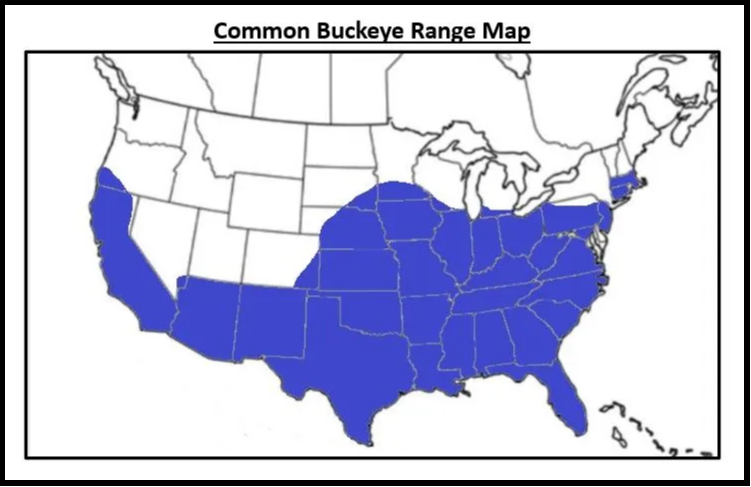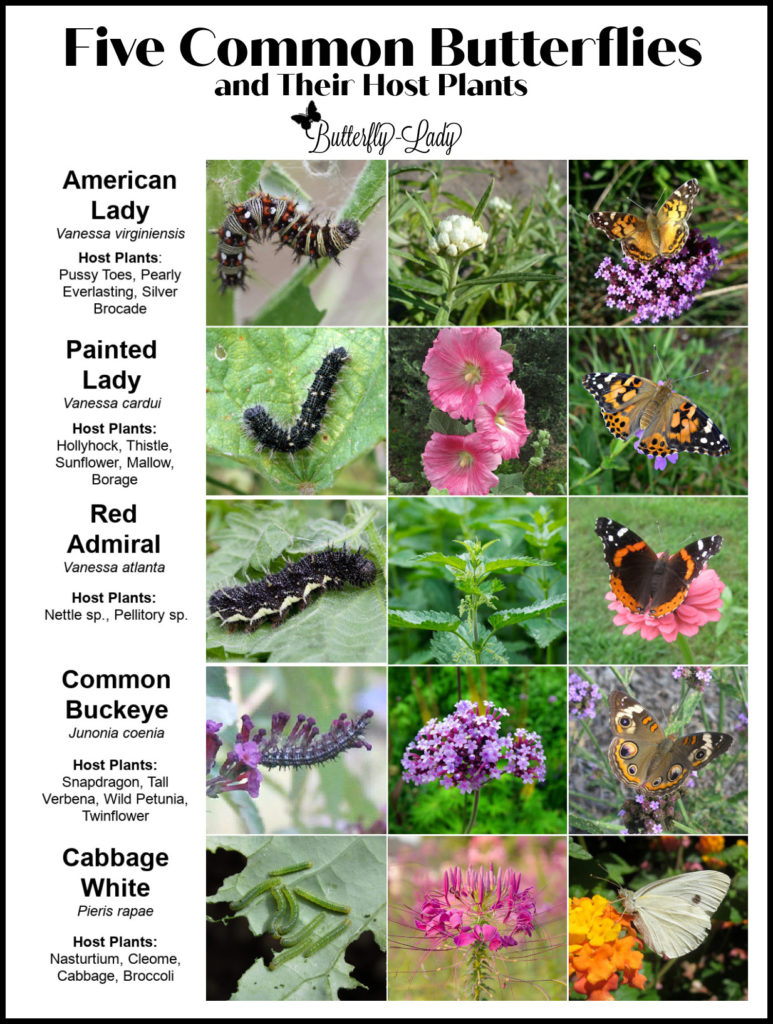There are approximately 20,000 species of butterflies in the world. About 725 species are found in North America north of Mexico, with about 575 of these occurring regularly in the lower 48 states of the United States, and with about 275 species occurring regularly in Canada. In most parts of the United States, you can find roughly 100 species of butterflies near your home. The number is higher in the Rio Grande Valley and some parts of the West, somewhat less in New England. As one goes northward into Canada the number decreases, while as one goes southward into Mexico the number greatly increases. (https://www.naba.org)
Here is a list of some of the five most common butterflies found throughout the United States. Plant their host plants to attract them to your garden.
Red Admiral (Vanessa atalanta)
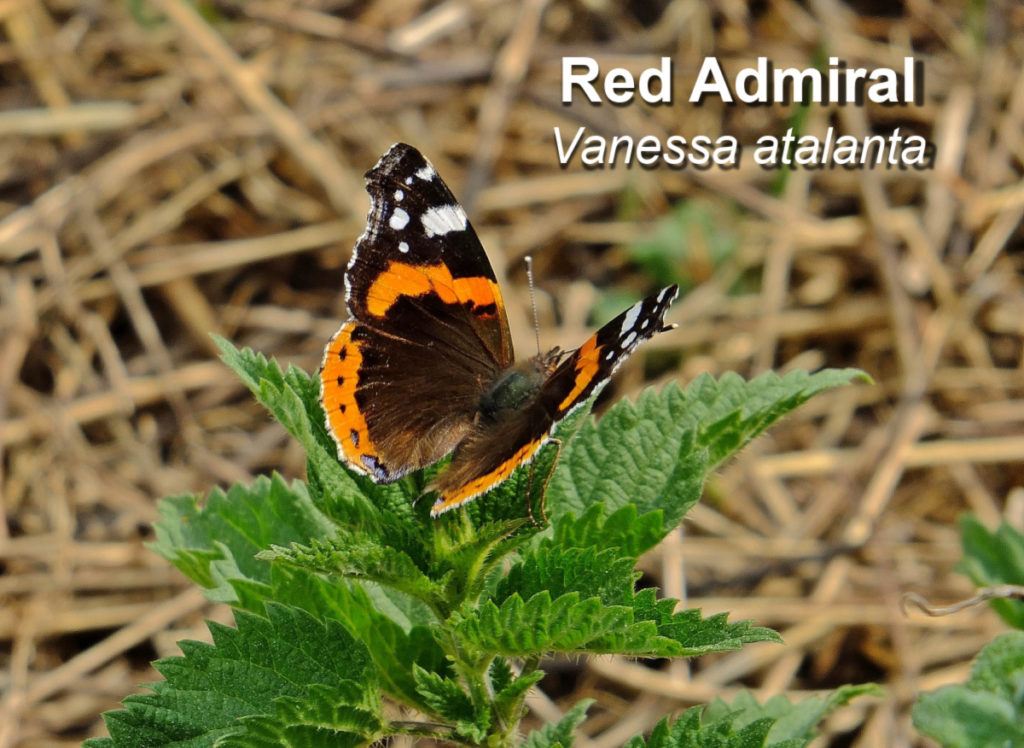
Identifying Characteristics:
- Red Admirals have a wingspan of 1.75 to 2.5 inches.
- The coloring is dark brown with a reddish circular band and white spots. The underside of the back wings looks similar to bark.
- The caterpillars are pinkish-gray to charcoal with white spots. They have spines along the back that resemble hairs.
Host plants include False Nettle (Boehmeria cylindrica), Pellitory (Parietaria pensylvanica), and Nettles (Urtica spp.).

Painted Lady (Vanessa cardui)

Identifying Characteristics:
• Painted Lady butterflies have a wingspan of 1.75 to 2.5 inches.
• The coloring is pinkish-orange, with dark brown to black markings near the wingtips and white spots inside the black markings.
• The caterpillars’ coloring is variable, ranging from greenish-yellow to charcoal. Most have light-colored spots.
Host plants include an incredibly wide range of plants from many different families: Borage (Borage officinalis), Hollyhock (Alcea spp.), Mallow (Mallow spp.), Plantain (Plantago spp.), Sunflowers (Helianthius spp.), and Thistles (Cirsium spp.)
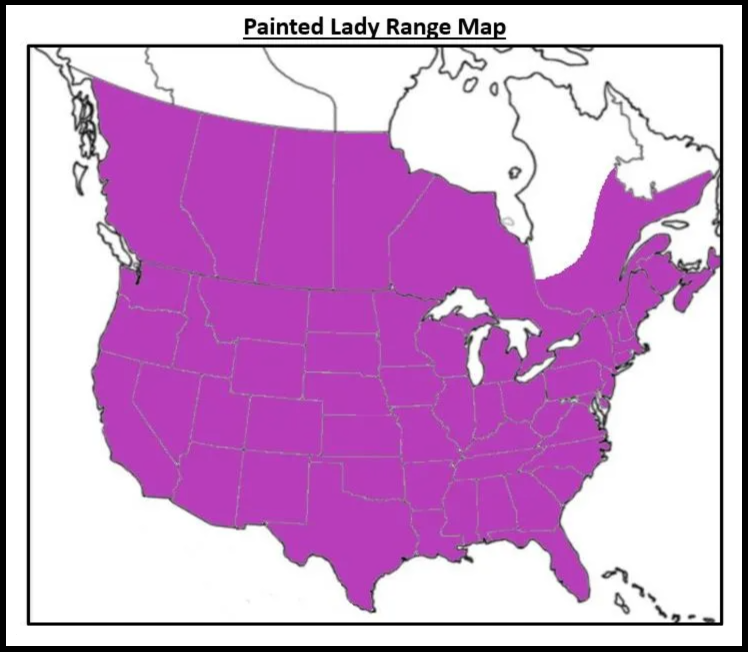
American Lady (Vanessa virginiensis)
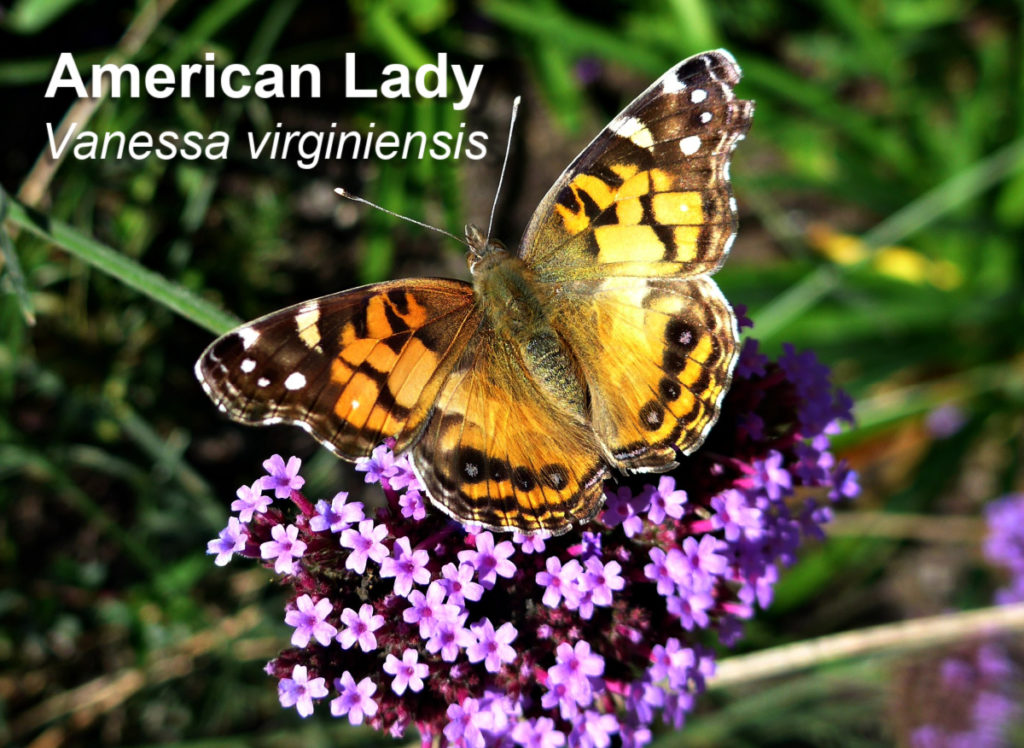
Identifying Characteristics:
• American Lady Butterflies have a wingspan of 1.75 to 2.5 inches.
• The coloring of this species is a brilliant orange with dark borders and markings and white and purple spots. The underwings have an ornate pattern similar to a cobweb.
• On the underside of the wings, American Lady butterflies have eyespots. These circular markings make the butterfly look intimidating to predators, warding off potential danger.
Host plants include Pearly Everlasting (Anaphalis margaritacea), Pussy-Toes (Antennaria spp.), Sweet Everlasting (Pseudognaphalium obtusifolium), and Silver Brocade (Artemisia Stellerina).
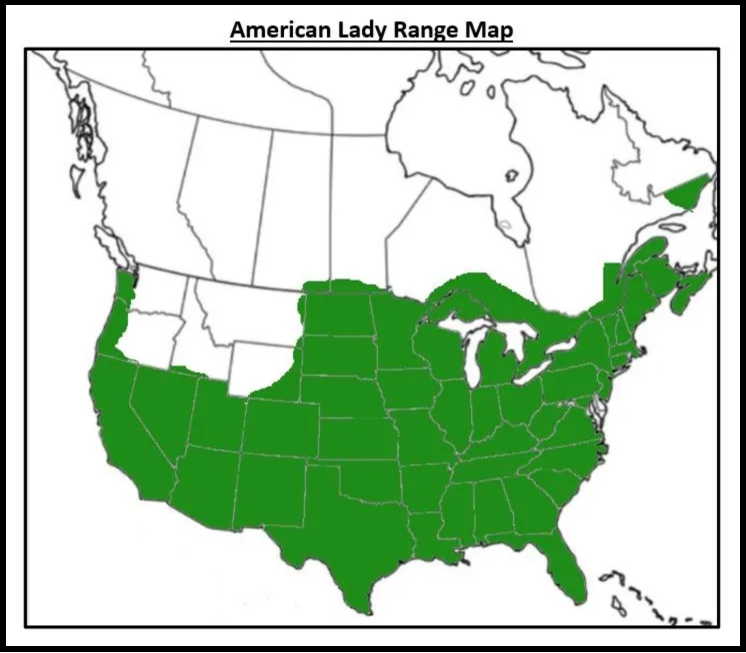

Cabbage White (Pieris rapae)
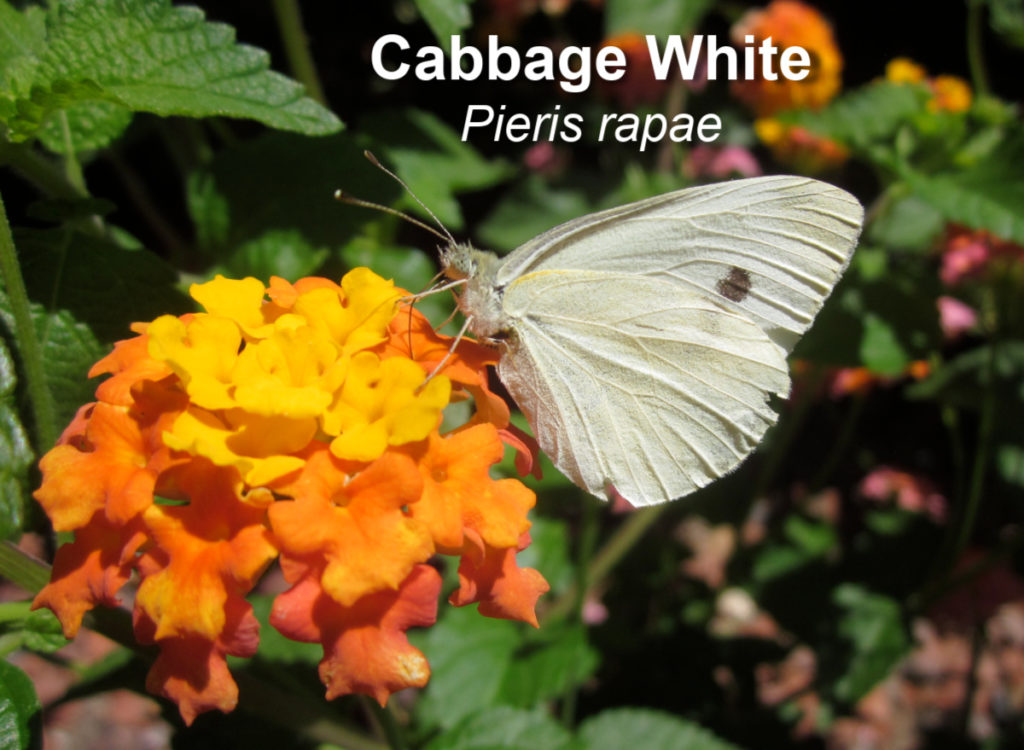
Identifying Characteristics:
• Cabbage White Butterflies have a wingspan of 1.25 to 2 inches.
• The wings are light greenish to white, with black wing tips and black dots in the center of each wing. Males have one black dot on each side, and females have two.
• Caterpillars, sometimes called Cabbage Worms, are dark green with a light green stripe along the back.
Host plants include Broccoli (Brassica oleraceae spp.), Brussel Sprouts (Brassica oleracea), Cabbage (Brassica capitata), Cauliflower (Brassica botrytis), Flowering Kale (Brassica oleraceae acephala), Turnip (Br rapa), Prairie Pepperweed (Lepidium densiflorum), Peppergrass (Lepidium virginicum), Nasturtium (Nasturtium spp.), Radish (Raphanus sativus), Spider-Flower (Cleome spp.), and Sweet Alyssum (Lobularia maritime).
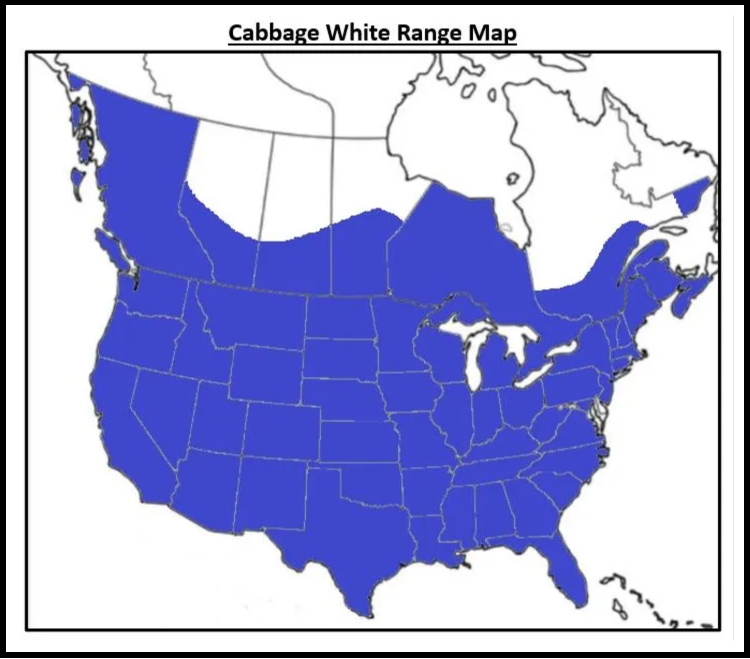
Common Buckeye (Junonia coenia)
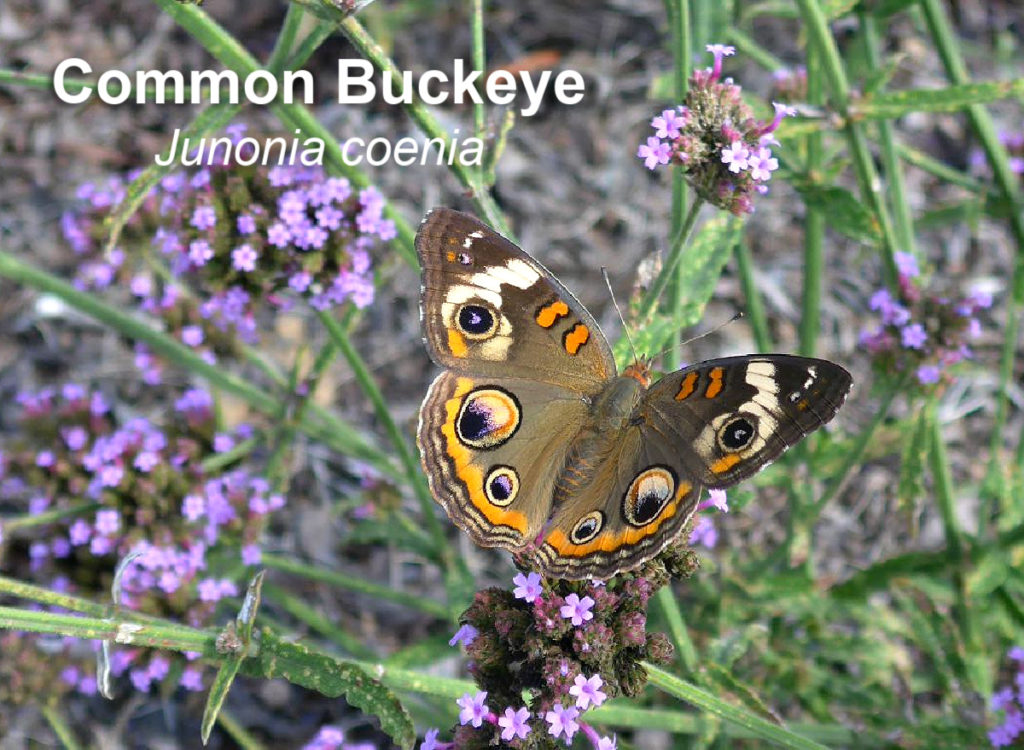
Identifying Characteristics:
• Common Buckeye butterflies have a wingspan of 2 to 2.5 inches.
• Their coloring is brown with orange bars. Black and white rings outline three to four prominent eyespots with middles in blue, magenta, orange, and green shades.
• Caterpillars are dark brown to black with stripes along the back and sides and spines around the entire body.
Host Plants include Wild Petunia (Ruellia humilis), Violet Ruellia (Ruellia nudiflora), Plantain (Plantago spp.), False Foxglove (Aureolaria grandifloria), Paintbrush (Castilleja spp.), Toad-Flax (Nuttallanthus canadensis), Common Frogfruit (Lippia nodiflora), Lance-Leaf Frogfruit (Lippia lanceolata) and Brazilian Verbena (Verbena bonariensis).
